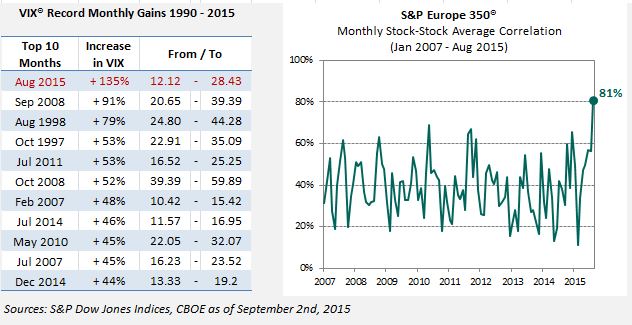Although the broader S&P 500® was down 7.2% between July 1, 2015, and Sep. 1, 2015, not all related indices performed as poorly. Indeed, the S&P 500 High Quality Rankings Index was down just 5.3% during the same period. The S&P 500 High Quality Rankings Index is a benchmark with constituents that must earn an S&P Capital IQ Quality Ranking of A- or above. These are companies that have consistently exhibited strong earnings and dividend growth records over the past 10 years.
These companies include packaged foods and meats producer Hormel (HRL), footwear maker Nike (NKE), and aerospace and defense issue Lockheed Martin (LMT).
According to Sam Stovall, U.S. equity strategist for S&P Capital IQ, S&P 500 constituents with above-average S&P Capital IQ Quality Rankings had a beta of 0.9, while those companies with below-average quality rankings (B or below) had a beta of 1.3—and 1.1 for those with average rankings (B+).
As of early September 2015, from a sector perspective, the S&P 500 High Quality Rankings Index had a relatively high exposure to industrials (27% of assets versus 10% for the S&P 500), consumer staples (19% versus 10%), and consumer discretionary (18% versus 13%). In contrast, there were limited stakes in financials (6% versus 17%), information technology (6% versus 20%), and energy (1% versus 7%).
The S&P 500 High Quality Rankings Index is rebalanced and reconstituted quarterly, so no position garners a weighting greater than 1.5%, unlike the market-cap-weighted S&P 500.
S&P Capital IQ thinks in light of the likely continued volatility ahead of the upcoming Federal Reserve meeting, investors should consider securities that are above-average in quality.
—————————————————————————————————–

























































